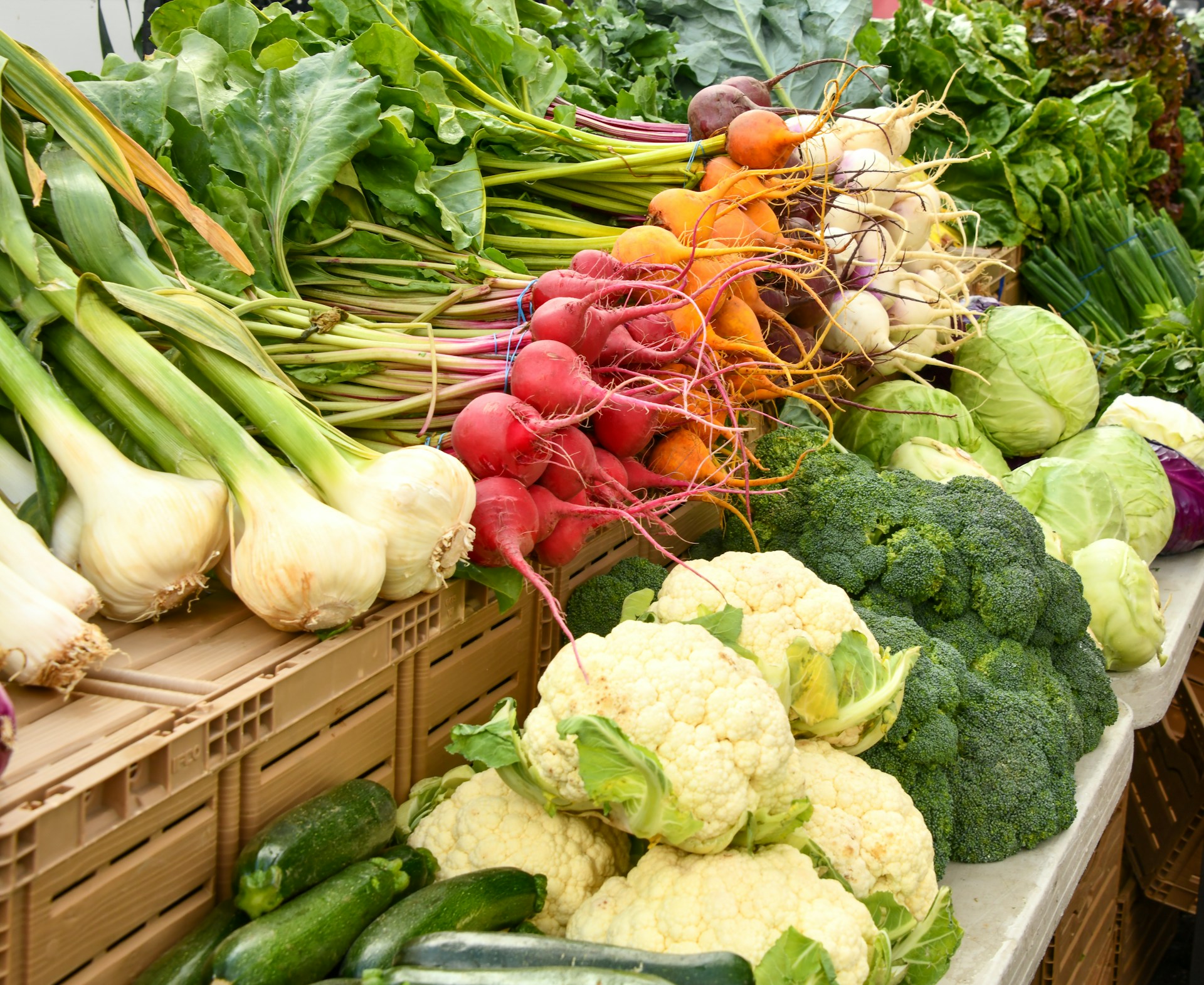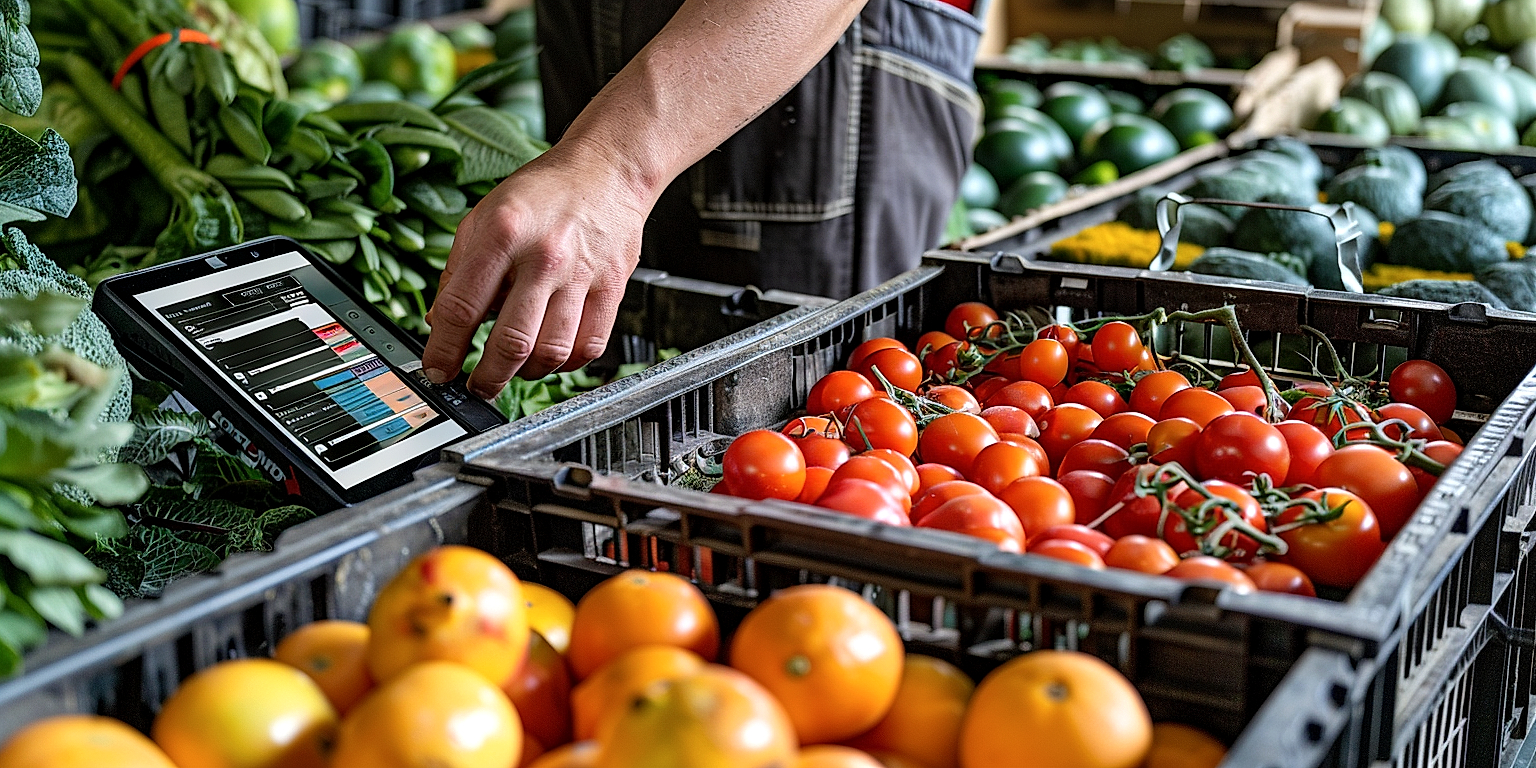Effective management of inventory presents a significant challenge in the produce distribution industry.
Missteps in strategy can lead to waste, lost profits, and frustrated customers.
The perishable nature of the goods adds an additional layer of complexity, necessitating speedy, efficient strategies.
Over the years, professionals in this field have grappled with various hurdles.
However, solutions have emerged, driving industry evolution.
This post aims to shed light on these key challenges and the innovative strategies implemented to surmount them.
Contents
- Key Inventory Challenges In Produce Distribution Solved
- 1. Insufficient storage space issues addressed
- 2. Minimized Risk of Product Spoilage
- 3. Optimized Inventory Turnover Rate
- 4. Resolved Erratic Demand Forecasts
- 5. Eliminated Inaccurate Inventory Records
- 6. Avoided Understocking or Overstocking Situations
- 7. Solved Delays in Inventory Replenishment
- 8. Streamlined Low Visibility into Stock Levels
- 9. Reduced time to disseminate fresh goods.
- 10. Mitigated High Transportation Costs
- The Bottom Line
Key Inventory Challenges In Produce Distribution Solved
1. Insufficient storage space issues addressed
One tremendous challenge faced in the world of produce distribution is insufficient storage space.
The need for various produce types to be stored at different temperatures and humidity levels often results in the need for multiple storage locations.
However, investing in expanding storage capacity isn’t always feasible due to fiscal constraints that often affect companies in the produce distribution industry.
Fortunately, methods to increase storage space efficiency exist that can address this issue effectively.
By leveraging an inventory management system that utilizes a FIFO (First In, First Out) method, companies can optimize the use of their existing storage space significantly.
This method ensures that produce arriving first will also be the first to leave, thus avoiding unnecessary occupation of storage space.
Furthermore, this system helps prevent product spoilage by ensuring the oldest inventory is sold first, further optimizing storage space usage.
Adequate organizational practices, like careful placement and arrangement of produce, can also help maximize storage space.
By grouping similar produce items together and utilizing vertical space, companies can often find they can store more than they initially believed without any additional cost.
Retrofitting storage facilities with adjustable shelving or modular units can also increase storage density without expanding the physical storage area.
Another option is to utilize a Third-Party Logistics (3PL) provider to handle some of your overflow during peak seasons.
3PL providers have the infrastructure already in place to store and distribute your products, alleviating the needs to invest in additional storage facilities.
Finally, companies should also consider investing in solar-powered cold storage solutions, especially for operations in locations with ample sunlight.
These systems reduce the need for expensive conventional energy sources and are environment-friendly, thus offering a sustainable option for spatial constraints.
Addressing the issue of insufficient storage space isn’t solely about expanding storage facilities, but rather finding intelligent and efficient methods to use the existing space optimally.
This should ultimately lead to a more smooth-running operation that can handle the inventory challenges in produce distribution effectively.
2. Minimized Risk of Product Spoilage
In the world of produce distribution, one of the most significant challenges is minimizing the risk of product spoilage.
Due to the consumable nature of produce, it tends to spoil quickly if not properly managed.
This issue presents a significant threat to profits and efficiency in the supply chain.
Implementing effective inventory control methods can greatly reduce the risk of product spoilage.
A key element in minimizing this risk is maintaining optimal storage conditions; these need to be constantly monitored and adjusted as necessary.
Temperature and humidity are especially crucial factors that should be regulated strictly to preserve product freshness.
The use of sophisticated storage facilities equipped with advanced monitoring systems can help in achieving this task.
Moreover, implementing a first-in-first-out (FIFO) inventory system ensures older stock is sold first, thus drastically reducing the chance of spoilage.
Additionally, intelligent inventory planning can help minimize spoilage risk by avoiding overstocking situations.
Accurate demand forecasting ensures that the right amount of produce is stocked at the right time.
This balancing act not only reduces waste but also decreases inventory holding costs.
Implementing a robust stock rotation system is yet another effective strategy in minimizing the risk of product spoilage.
Coordination and collaboration with suppliers also play a critical role as delays in shipment can lead to product spoilage.
Lastly, consistent quality checks ensure only fresh and quality products are distributed, thus maintaining customer trust and loyalty.
Adopting these strategies in produce distribution to minimize the risk of product spoilage significantly contributes to a lean and efficient supply chain.
This has the effect of enhancing overall profitability and promoting environmentally-friendly practices by reducing waste.
3. Optimized Inventory Turnover Rate
In the intricate world of produce distribution, an optimized inventory turnover rate plays a significant role in maximizing profits and sustaining operational efficiency.
Essentially, the inventory turnover rate refers to the number of times a business sells and replaces its inventory.
Since fresh produce has a limited shelf life, it’s crucial for businesses to maintain a fine balance – selling their products quickly but without compromising the quality or running out of stock.
Optimizing the inventory turnover rate enables businesses not just to reduce the risk of product spoilage but also enhance customer satisfaction by providing fresh and high-quality produce consistently.
Improving this rate signifies that the business is effectively managing its inventory, averting excessive stock that could lead to waste, and avoiding limited stock that could result in missed sales opportunities.
Utilizing advanced inventory management software can greatly assist in optimizing the inventory turnover rate, by providing accurate and real-time data about the inventory.
This software can highlight patterns and predict future trends, enabling more informed inventory decisions.
Proper handling and storage practices also play a pivotal role in controlling the inventory turnover rate, ensuring produce remains fresh for longer and therefore, sellable.
Inventory management strategies such as First-In, First-Out (FIFO) can also prove to be valuable in improving the turnover rate, ensuring that old stock is sold before the new one.
Operational efficiency can be further enhanced by strategically timing the delivery of fresh produce to match consumer demand patterns.
This strategy not only optimizes the inventory turnover rate but also minimizes storage and transportation costs.
Effective communication and collaboration with suppliers can also help businesses anticipate delivery times, enhancing inventory planning and management.
By optimizing the inventory turnover rate, businesses can increase their sales capacity, thereby enhancing profitability.
They can also reduce capital tied up in inventory, thereby freeing up resources that can be utilized for other areas of the business.
In a nutshell, optimizing inventory turnover rate is integral to the success of a business in the field of produce distribution.
4. Resolved Erratic Demand Forecasts
Matching demand forecasts to the actual needs of customers in the produce distribution industry is an immense challenge.
Being unable to accurately anticipate demand patterns leads to mistakes in purchasing, stocking and selling produce.
These mistakes, in turn, can lead to excessive wastage of perishable goods, loss of sales or profits, and even potentially damage the company’s reputation.
A key factor that contributes to erratic demand forecasts is the unpredictability of consumer behaviour.
External factors such as seasonal changes, market trends, and the overall economical situation also have a significant effect on consumer purchasing patterns.
But thanks to advances in technology, it’s now possible to harness Big Data Analytics and Artificial Intelligence (AI) technologies to arrive at far more accurate demand forecasts.
Specifically, predictive analytics, which utilizes historical data, current market trends, and sophisticated algorithms, can accurately anticipate future demand patterns.
In other words, it’s no longer a guessing game, but a data-driven approach that assesses the likely demand in different scenarios.
This can help businesses in produce distribution to effectively plan their purchasing, stocking and selling strategies.
The end result is minimized wastage, maximized sales, profits, and happy customers.
Advancements in AI technology also enable dynamic pricing and personalization of marketing strategies, which can further influence consumer demand in a positive way.
Companies would therefore have the ability to adjust their inventory levels and prices as needed, based on accurate, real-time demand forecasts.
Successfully resolving erratic demand forecasts not only smoothens the operations of businesses in the produce distribution industry, but also improves the overall efficiency and profitability.
It’s a transformative strategy that can provide businesses with a competitive edge, helping them to thrive in today’s volatile economic climate.
So, by employing next-generation technologies to solve the problem of erratic demand forecasts, a major challenge in produce distribution, one can truly transform this pain point into a strategic advantage.
5. Eliminated Inaccurate Inventory Records
The elimination of inaccurate inventory records is paramount in maintaining a healthy produce distribution chain.
A plethora of problems arise if the records kept are unreliable or incorrect.
These problems include overstocking, understocking, avoidable product spoilage, and unnecessary transportation costs.
These situations occur because inaccurate inventory records create a false representation of the current stock levels.
Thus, they interfere with the replenishment and procurement processes which then leads to stock discrepancies.
The consequences are not just financial loss, but also wasted time and resources, customer dissatisfaction, and reduced operational efficiency.
Hence, to circumvent these issues, the establishment of a sound and robust inventory management system is key.
This includes regular stock checks, real-time inventory monitoring, and the use of automated tracking systems.
In this way, the data obtained is accurate and the stock levels are kept updated in real-time.
Moreover, automation substantially reduces human error contributing to more precise inventory records.
Additionally, visibility is drastically improved, allowing for quick detection of any discrepancies or anomalies in the inventory.
Moreover, by being proactive and resolving issues swiftly, the distributor can save time, money, and resources, leading to better operational efficiency.
When the inventory records are clear and accurate, plans can be made effectively, reducing the risk of product spoilage.
Moreover, better coordination and communication between suppliers, distributors, and retailers can be achieved, thus, enhancing the distribution process.
Overall, an effective inventory management practice reduces the risk of inaccuracy and ensures a stable supply chain, thereby improving productivity and profitability in the produce distribution industry.
6. Avoided Understocking or Overstocking Situations
One of the most significant challenges in produce distribution is managing the fine line between understocking and overstocking situations.
Having too little inventory, otherwise known as understocking, can lead to missed sales opportunities and unsatisfied customers.
On the other hand, overstocking can cause wastage of perishable items, resulting in financial losses and harm to the company’s reputation.
Effectively balancing this delicate inventory equation is fundamental in the produce distribution industry.
Success in inventory management, therefore, heavily relies on the ability to accurately forecast demand and adjust inventory levels accordingly.
Historical sales data, market trends, and seasonal variations are typically employed to aid businesses in anticipating demand fluctuations.
These factors, paired with real-time inventory tracking, aid in avoiding understocking or overstocking situations.
However, even with these tools, unforeseen changes in the market or disruptions in the supply chain can still create inventory imbalances.
By utilizing automation and artificial intelligence (AI) solutions, businesses can further enhance their forecasting capabilities and achieve more precise inventory management.
These technologies have the capability to analyze complex data sets and identify patterns that may not be easily seen by human analysis.
As a result, they can predict demand with higher accuracy and help to avoid the risk of stockouts or overstocks.
Yet, it is essential to remember that while technology can greatly assist in inventory management, it cannot fully replace the need for experienced decision-makers.
Ultimately, the combination of advanced technologies with strategic decision-making will ensure that the right amount of inventory is available at the right time, thus circumventing the frustrations of understocking and overstocking situations.
In solving this key inventory challenge, a business not only boosts its operational efficiency, but also enhances customer satisfaction, safeguards its reputation, and secures its bottom line.
Therefore, finding the right balance between having too little or too much stock truly represents a pivotal point of success in produce distribution.
7. Solved Delays in Inventory Replenishment
One of the influential challenges in produce distribution is the delay in inventory replenishment.
These hurdles severely impact the efficiency of your operation and can lead to product spoilage, logistic issues, and retailer’s dissatisfaction.
But the good news is, this nagging problem can be solved with the right strategies.
Understanding the demand forecast and supply chain dynamics is crucial/b> to mitigate delays in inventory replenishment.
Inventory replenishment, by definition, is the process of restocking products in a supply chain to ensure adequate availability – an aspect that holds dire importance especially in produce distribution where freshness is critical.
The advent of technology has made the task of replenishing stocks easier, quicker, and more reliable.
A powerful inventory management system can automate and streamline the replenishment process, ensuring quick order placement and processing.
By setting up automatic reordering points, a system can make sure replenishments are ordered just in time to prevent stock-outs and overselling, without the necessity for manual intervention.
Inventory visibility is another aspect that plays a vital role in fixing the replenishment delays.
With real-time inventory tracking, you can have clear visibility of your stock levels at all times, enabling you to promptly spot the need for replenishment and take action.
Furthermore, the ability to track product movement from the warehouse to the end customer allows you to get a clear understanding of sell-through rates, thereby allowing you to fine-tune your replenishment strategies.
Efficient supplier relationships contribute significantly to avoiding replenishment delays.
An efficient relationship ensures that the suppliers are committed to delivering the inventory on time, reducing the likelihood of running out of stock, and enhancing the reliability of your supply chain.
Additionally, you can consider multi-sourcing, which involves having multiple suppliers for the same product.
This strategy reduces dependency on a single supplier and can greatly reduce the risk of replenishment delays caused by supplier-related issues.
Lastly, to mitigate delays in inventory replenishment, it is important to implement flexible and adaptive inventory policies.
This means the capabilities to quickly adapt to changes in demand, supply chain disruptions, and market trends without having a negative impact on your inventory levels.
8. Streamlined Low Visibility into Stock Levels
One of the most common struggles faced in produce distribution is the issue of low visibility into their inventory or stock levels.
Having a streamlined process for this visibility, means consistently knowing the exact quantity of each item in stock at every moment, which results in greater efficiency and significantly increases customer satisfaction.
Without this visibility, businesses often find themselves either overstocking or understocking, both of which can lead to increased costs and reduced sales.
Luckily, with the introduction of advanced inventory management systems, accurate and real-time visibility into stock levels has become possible.
These systems allow businesses to automatically track the movement of inventory, record sales, and predict future stock needs.
Moreover, by providing alerts when stock levels are low, these systems help to prevent possible shortages and potential losses.
Inventory visibility is not just about knowing how much stock you have, but also about understanding the nature of your inventory.
For example, in the field of produce distribution, perishable goods are common and these require special attention when managing inventory levels due to their short shelf life.
Thus, the integration of an inventory management system that allows for categorization of inventory based on perishability or other factors can be highly beneficial.
It’s also vital that inventory data is easily accessible and clear to all relevant team members, from the warehouse manager to the sales team.
When this happens, everyone in the organization gains a comprehensive overview of stock levels at all times, ensuring that decisions regarding inventory are well-informed and strategic.
Furthermore, having low visibility into stock levels also means a lack of insight into transit inventory.
With a streamlined process, businesses can keep track of stocks in transit, predict delays, and make arrangements to avoid the potential negative impact of such delays on inventory levels.
This also helps to provide an accurate delivery time to the customers increasing their satisfaction and loyalty.
Overall, streamlined visibility into stock levels is a critical aspect in overcoming the key inventory challenges in produce distribution.
In the end, a well-managed and efficient inventory management system results in lower costs, increased sales, and a smoother distribution process – all contributing to the success and growth of the business.
9. Reduced time to disseminate fresh goods.
In the realm of produce distribution, speed is essential. The nature of fresh goods necessitates swift transportation and distribution to maintain their freshness and quality.
Any lag in the dissemination process would not only compromise the quality of the products but would also lead to significant losses for vendors.
Previously, the process of disseminating fresh goods was bogged down by inefficient inventory practices and supply chains.
An inconsistent inventory record, for instance, could cause delays in getting the goods out to the market.
Any kind of miscommunication or misalignment between supply and demand could lead to a breakdown in the process, extending the period between production and distribution.
By implementing robust inventory solutions, businesses are now able to significantly reduce the time it takes to disseminate fresh goods.
The utilization of technologically advanced inventory management systems, for instance, offers real-time inventory tracking which drastically reduces time spent on manual checks and balances.
Also, cloud-based inventory systems ensure that all stakeholders are kept in the loop about the status of the inventory, thus eliminating ambiguity and increasing efficiency.
Furthermore, the increasing adoption of automation in the inventory management process has reduced the possibility of human error, thus streamlining the dissemination process of fresh goods.
By ensuring a smooth and efficient distribution process, businesses can now ensure that their fresh goods are disseminated quickly, arriving fresh and appealing to the customers.
As a result of these changes, businesses are not only able to maintain the quality of their goods but also enhance their reputation in the market by offering fast and efficient distribution of fresh produce.
Improved distribution time also means that businesses are able to respond quicker to market changes and customer demands, gaining an advantage over competitors.
To sum up, addressing the challenge of reduced time to disseminate fresh goods has a multi-faceted positive effect on the entire distribution process; improving not just speed, but overall efficiency and effectiveness.
As the fresher the goods are when they reach the consumer, the better their quality and the higher their value, a significant reduction in the dissemination time ensures a satisfactory experience for the consumer and profit for the businesses.
And as businesses continue to innovate and fine-tune their inventory management processes, we can expect even more improvements in the speed and efficiency of disseminating fresh goods.
10. Mitigated High Transportation Costs
One of the crucial challenges faced in produce distribution is the high transportation costs, which can significantly eat into the profits. This problem is primarily due to fluctuating fuel prices, vehicle maintenance costs, labor expenses, and other related factors.
While it may seem challenging to mitigate these high transportation costs, with the right strategies and implementation, it is certainly possible. Efficiency and optimization are the keys to achieving this.
Firstly, planning the transportation routes more effectively can result in a significant reduction in costs. By planning the quickest and shortest route, not only does it save travel time, but also reduces fuel consumption dramatically.
Moreover, ensuring regular vehicle maintenance can also help in maintaining fuel efficiency of the vehicles used for transport. A well-maintained vehicle consumes less fuel, ensures minimal breakdowns, and enhances the vehicle’s service life.
Another strategy that can be implemented is consolidating shipments. Instead of separate shipments for each of the orders, consolidating multiple orders, and delivering them at once would also result in lower transportation costs.
Investing in technology for better logistics management can be a game-changer in mitigating high transportation costs.
Technology can play a pivotal role in this respect. Automated vehicle routing, for instance, can help in determining the most efficient transport routes, hence minimizing fuel consumption and reducing transportation costs.
Additionally, using technology for real-time tracking of vehicles can also prove beneficial. With real-time tracking, possible challenges like traffic congestion, vehicle breakdowns, or any unforeseen circumstances can be addressed promptly.
Other than these, it’s also important to outsource transportation services to trusted third-party logistics providers (3PLs) who specialize in this area. These 3PLs have the right resources, technology, and expertise to efficiently handle transportation needs, which can contribute to reduced transportation costs.
High transportation costs can also be mitigated by assessing and renegotiating contracts with transportation providers. By doing so, it’s possible to establish an agreement on more favorable terms.
An aspect that many often overlook is the importance of training the drivers. Drivers should be trained to adhere to speed regulations and promote safe driving practices which can help in maintaining vehicle efficiency and minimizing breakdowns or accidents.
Lastly, in the era of sustainability, switching to alternative fuel choices like biodiesel, electric or hybrid engines can also contribute to a significant reduction in fuel costs, thus reducing transportation costs.
In essence, mitigating high transportation costs boils down to adopting effective strategies, leveraging technology advancements, and promoting efficiency. Through these measures, it is possible to overcome the challenge of high transportation costs in produce distribution.
The Bottom Line
The effective management of inventory has multifaceted benefits for businesses.
It not only addresses the challenge of insufficient storage space but also significantly reduces the risk of product spoilage, thus preventing considerable financial losses.
Minimising these risks directly contributes to optimizing inventory turnover rates, thus ensuring streamlined business operations.
Resolving the issue of erratic demand forecasts and eliminating inaccurate inventory records ensures that the business is always prepared and not caught off guard due to overstocking or understocking.
It is essential to avoid such situations as they lead to operational inefficiencies and customer dissatisfaction.
Moreover, quickening the dissemination of fresh goods is dually beneficial because it satiates customer demand and reduces the potential for waste.
Therefore, undertaking steps to proactively manage and enhance inventory processes thereby leading to significant savings in transportation costs and other related expenses.
Hence, it is prudent for any business to invest in efficient inventory management for optimal operations and profitability.




